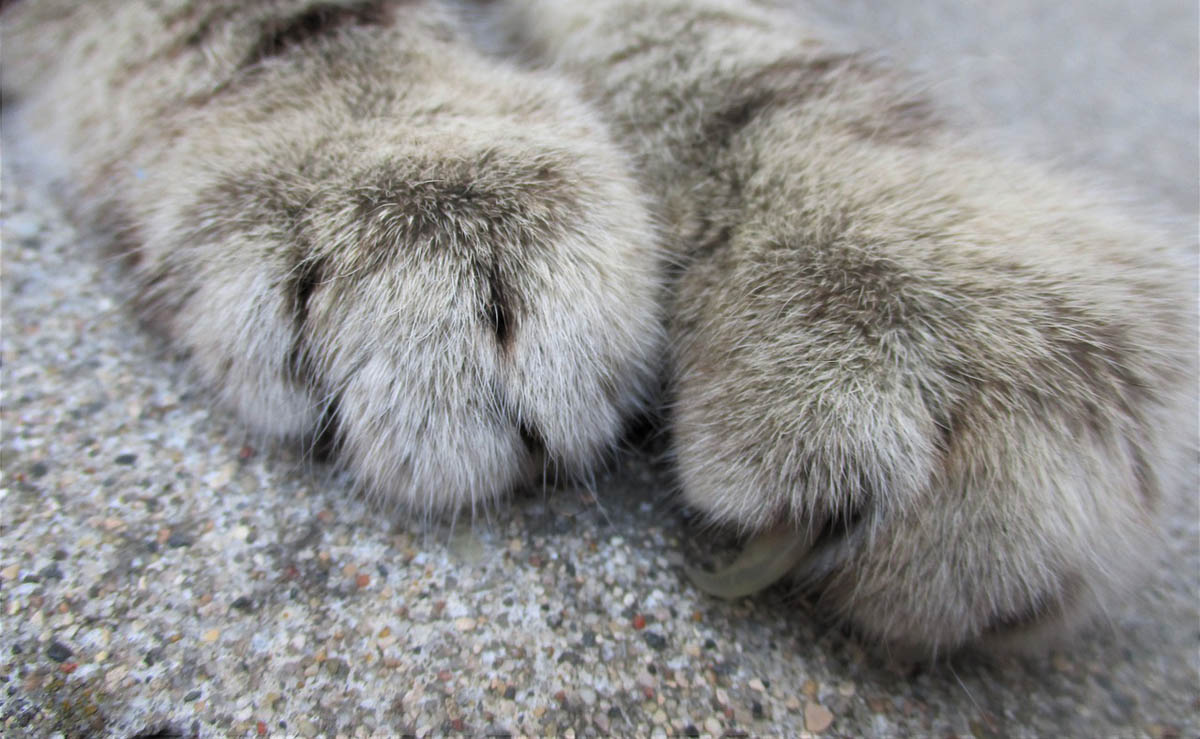Causes of claw and claw bed infection
Paronychia is the medical name for inflammation or bacterial infection of the claw bed and/or surrounding skin and can be bacterial or fungal. Bacterial infections usually occur secondary to trauma, such as overzealous claw trimming, obsessive claw chewing, ingrown claws or declawing surgery. Other causes include systemic diseases such as FIV or FeLV, diabetes, systemic lupus erythematosus, Cushing’s disease and use of steroids.
Several strains of bacteria have been isolated including Staphylococcus spp., Streptococcus spp, Pseudomonas spp, and Proteus spp. It is not uncommon for more than one type of bacteria to be involved.
Onychomycosis is a fungal infection of the claw. The most common agents are ringworm and Malassezia.
Ringworm is a highly contagious fungal infection that is most common in kittens, cats in overcrowded environments (such as shelters) and immunocompromised cats.
Malassezia is a yeast that is a normal part of the cat’s skin fauna. In some cats, an overgrowth develops, which can be due to immunosuppression, long-term antibiotic or corticosteroid use, allergies, endocrine disorders, seborrhea, and certain tumours.
Less common fungal and yeast infections include blastomycosis, cryptococcosis, and sporotrichosis.
Symptoms
Symptoms of claw infection depend on the pathogen involved. Infection can occur in one or multiple claws, symptoms include:
Paronychia
- Onychalgia (claw pain)
- Discolouration of the claw
- Pus
- Crusting
- Swelling
- Lameness
- Swelling and inflammation
- Itching and licking (occasionally)
Onychomycosis:
- Onychalgia (claw pain)
- Disfigurement of the claws
- Flaking
- Itching
- Brownish discolouration and greasy exudate (Malassezia)
Diagnosis
The veterinarian will perform a physical examination of your cat and obtain a medical history from you.
Baseline tests: Biochemical profile, complete blood count and urinalysis to evaluate the overall health of the cat.
Skin scrapings: To rule out other conditions such as mites.
Cytology: A sample of cells is obtained for microscopic evaluation to determine the organism involved.
Culture and sensitivity: To determine the strain of bacteria involved (culture) and the most suitable antibiotic (sensitivity).
Cats with unexplained fungal or bacterial infections may benefit from additional tests such as FIV, FeLV, and diabetes to determine if there is an underlying cause for the infections.
Treatment
Treatment will depend on the type of infection the cat has.
If the affected claw has been damaged (for example, due to trauma), it may be necessary to remove the claw.
Bacterial infection: Topical antibiotics applied to the affected area. If there is no response, it may be necessary to prescribe long-term oral antibiotics to treat a bacterial infection, the type of antibiotic prescribed will depend on culture and sensitivity results.
Fungal or yeast infection: Antimicrobial or antifungal soaks to treat fungal infection. Unresponsive fungal infections will require oral medications such as itraconazole, fluconazole or ketoconazole.
It may be necessary to remove the claw plate (which will grow back) to help clear the infection.
Prevention
Take care when trimming a cat’s claws to ensure you don’t cut into the quick (the central portion of the claw which is rich in blood vessels).

